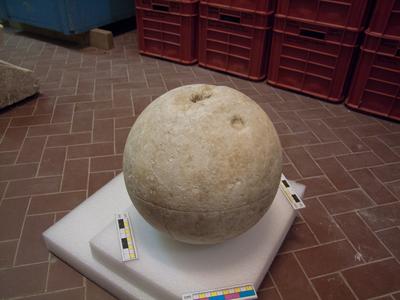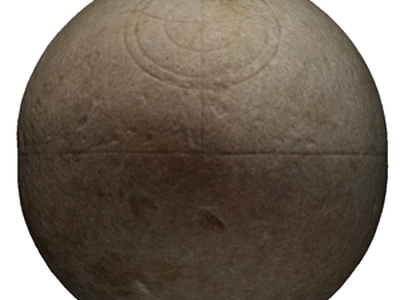Abstract
A Matelica si trova un raro modello di orologio solare in marmo bianco risalente, con incisioni, segni e scritture greche, detto “globo di Matelica”. // Il Globo o Sfera fu rinvenuto, nel 1985, durante le fasi di consolidamento del Palazzo del Governo, nel pieno centro storico di Matelica. Il Globo è costituito da una sfera, del diametro di 29 cm., di marmo greco cristallino. Su di essa sono incisi centri concentrici, linee, archi, lettere e parole greche. Il Globo è un antichissimo orologio solare, adoperato per fare calcoli astrologici, astronomici e cronologici. E’ un piccolo “computer di pietra” che può essere usato, con buona approssimazione, per calcolare le ore del giorno dal sorgere del sole, la data di Equinozi e Solstizi, il calendario e l’entrata del sole nelle varie costellazioni zodiacali. Il Globo è una sorta di meridiana e deve essere esposto correttamente alla luce per poter offrire dati corretti: le zone di luce e di ombra vanno ad intersecare i segni e le linee incise sulla superficie fornendo risposte corrette. Gordon and Reynolds: Another extremely rare device from Umbria, comparable only to an example from Prosymna found in 1935 (SEG 11.304), served a similar purpose, to give the month and hour, but seems to have worked with a gnomon. It consists of a marble sphere of about 29.3 cm diameter, which was fixed to a base at one 'pole' and oriented in the proper direction for the latitude of Matilica. The equator is marked round the circumference, with a meridian at right angles to it through the upper 'pole'. Parallel to the equator and somewhat below the pole, runs a line of thirteen equidistant holes each marked with a numeral: its centre-point, where it crosses the meridian, is no. 12; to the left are the numerals 11, 10, 9, 8, 7, 6; to the right 1, 2, 3, 4, 5, 6. Midway between this sequence and the equator are three concentric circles bisected by the meridian line. This diagram is marked in Greek with the names of the Zodiacal signs, at the top the winter solstice in Capricorn; then the pairs of signs separated by the meridian line; at the bottom the summer solstice in Cancer (this text alone is available at AE 1998: 426). Given its small size, it was probably used, like the skaphe, in a private house.




























